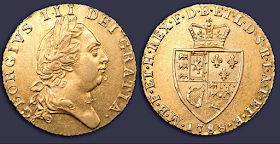As we saw in
yesterday’s posting, governments were not able to control the currency for
political purposes to any appreciable degree until they were able to hijack the
institution of the central bank. Even
then, their power over the money supply was generally limited by two factors
which tended to subject the value of the currency to the forces of the market,
rather than the force of politicians’ arguments.
One, the belief
that the money supply consisted entirely of cash — that is, coin and banknotes
— or cash substitutes, such as demand deposits (checking accounts). By ignoring the effect of the greater part of
the money supply, governments simply could not predict (or understand) any
financial effect that their limited definitions imposed on them.
 |
| Historically, non-cash transactions far outnumber cash ones. |
Two, there was
the fixed economic doctrine, only departed from with extreme caution and after
presumably careful consideration, that whatever backed the currency, it must be
redeemable in or convertible to gold or silver.
Only in this way could the faith and credit of the government — and its
currency — be maintained, and stability ensured.
Regardless how
much a politician wanted to spend, if his demands got beyond what the experts
considered “safe” — i.e., what could
be spared out of reserves of precious metal without running the risk of having
people lose confidence in the government . . . and the government’s money. For without money, no government could
function, and the politicians would be out of their jobs.
 |
| Manzikert: Bureaucrats betrayed the army and the Empire. |
Unfortunately,
with the new idea of the State that came out of the French Revolution and the
Napoleonic Wars, governments — especially the new republics in Central and
South America — came to believe that government debt that represented a vague
promise to pay out of anticipated future tax collections was somehow not only
as good as private sector debt that represented claims on specific assets, it
was actually better. The idea grew up that
government debt was, in fact, the only legitimate backing for a currency.
The fact that
this is exactly what the politicians and bureaucrats wanted everybody to
believe was just a coincidence. . . .
 |
| Jemima the Great saves England with a pitchfork, 1797 |
Naturally, anyone
who had savings in a bank wanted the money out of the bank and safe in hand —
and he wanted it in gold. Anyone who had
banknotes also wanted gold he could trust instead of bits of paper that might
not be worth anything once the French took and burned London and started
rampaging up and down the country.
Before long gold
reserves had dropped so low that the Bank of England requested — or was
ordered, depending on your source — to stop payment in gold as an emergency
measure. It was not expected to last
more than a couple of weeks at most, just until the panic passed and people’s
fears were calmed.
The temporary
suspension of convertibility lasted until 1821.
In addition to allowing the government to carry on the struggle against
Napoleon without raising taxes too
much, debt money not tied to anything other than government debt encouraged
further concentration of ownership of capital, this time the new technology of
the Industrial Revolution.
 |
| From 1797 to 1821 the Paper Pound was not "good as gold." |
Still, the banks
continued to create new money in the form of promissory notes and demand
deposits backed by private sector assets.
At the same time, government policy and economic theory convinced people
that all the new money was really past savings controlled by the rich, or
purchasing power magically created by government. With control over money and credit in the
hands of the already wealthy and the politicians, ownership became even more
concentrated than before.
There was another
development that came out of the suspension of convertibility of banknotes into
gold. Government debt changed from being
one type of backing for the currency, to the preferred backing for the
currency, and in the minds of some experts, the only legitimate backing for the
currency.
 |
| Panic of 1825 |
Then came the
defaults of the sovereign debt of the Central and South American republics,
triggering the Panic of 1825. Stock and
bond prices plunged, and a significant number of old and reputable banks in the
City of London were in serious trouble.
Ironically, one
of these was the bank founded by Henry Thornton, the “Father of Central
Banking,” whose treatise, An Enquiry into
the Nature and Effects of the Paper Credit of Great Britain (1802)
contained numerous warnings about the dangers of dealing in “fictitious bills,”
i.e., financial instruments with no
specific assets behind them, of which government debt was considered the worst,
aside from actual fraud. Not heeding his
father’s warnings, Thornton’s son got the bank he inherited into a great deal
of trouble.
Even more ironically,
despite the fact that it was the issuance of unbacked government debt that
inflated the money supply — and is credited with starting the modern business
cycle of “boom and bust” — many of the experts (and all of the politicians)
blamed the lack of control by government, and the unregulated (by government as
opposed to the market) monetization of private sector assets by commercial
banks for the financial disaster.
#30#